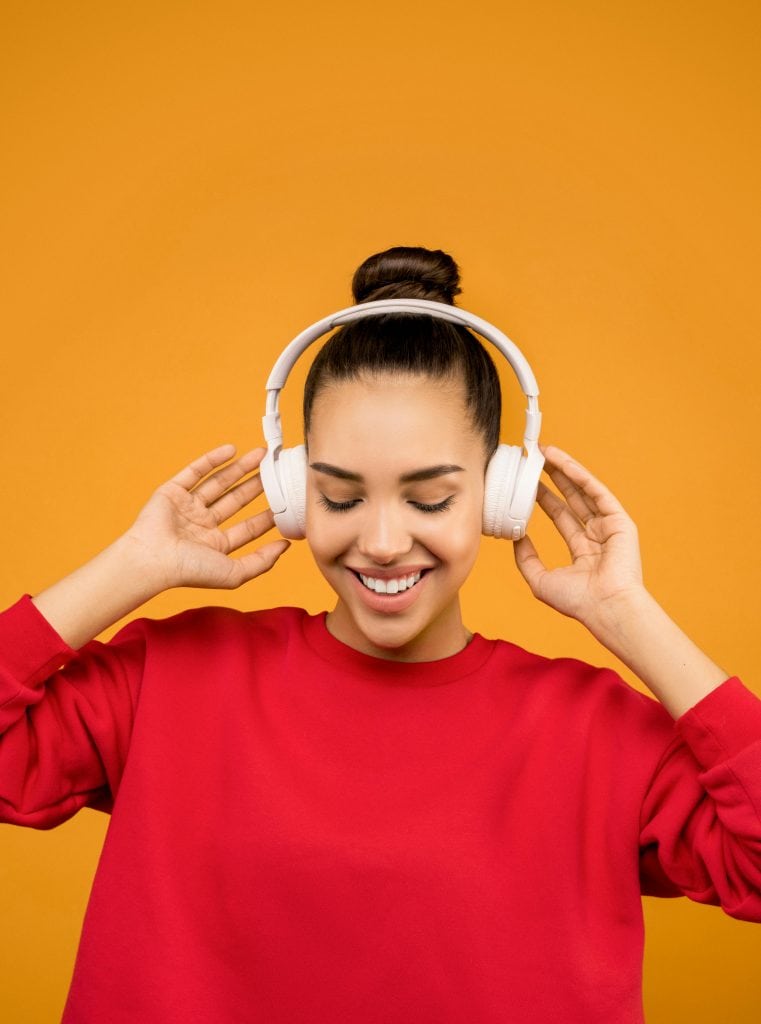Ever heard music and felt like you were instantly teleported back to a moment you didn’t even know you remembered? That’s the wild magic of music—it doesn’t ask permission, it hijacks your memories instantly. One chorus in, and boom—you’re 17 again, in your first heartbreak, or back in that messy room dancing in pyjamas to a 90s hit.

Neuroscience calls it “musical memory recall,” but let’s be real—it’s your personal mixtape rewinding time, each beat drop resonating with snetimental memories.
Neuroscience has shown that music has a powerful effect on memories because it activates multiple parts of the brain at once—especially those linked to emotions and long-term memory. When you hear a familiar song, the hippocampus (which stores memories) and the amygdala (which processes emotions) work together, making the memory more vivid and emotionally rich. What’s even more fascinating is how music affects people with Alzheimer’s disease. Studies show that even when other memories fade, musical memories often remain.
The Soundtrack of Our Lives
In a world where screens refresh by the second and digital trends vanish in a blink, music has emerged as the most consistent anchor to our inner worlds. According to Spotify’s 2024 global trend report, streams of throwback playlists—particularly 80s and early 2000s genres—rose by 490% over the last five years. YouTube’s top user-generated playlists include titles like Songs That Feel Like a Hug and High School Flashbacks, underscoring that what we stream is what we miss.
From retro remixes and vinyl revivals to algorithmically tailored nostalgia, today’s listeners are turning their playlists into personal time capsules—emotional archives that blend cultural memory with private experience.
India’s Nostalgia: The Timeless Pull of Film Music
Nowhere is this emotional resonance more profound than in India, where film music is not just a soundtrack but the heartbeat of daily life. Indian film songs, especially from the golden era of the 1950s to the 1980s, serve as collective memory banks, carrying the joys, heartbreaks, and hopes of generations. These melodies are woven into the fabric of Indian identity—played at weddings, remembered at family gatherings, and revisited in solitary moments of reflection.
Kishore Kumar and the Retro Icons
Among the pantheon of Indian music legends, Kishore Kumar stands out as the voice of nostalgia. His songs—“Pal Pal Dil Ke Paas,” “Yeh Shaam Mastani,” “Zindagi Ek Safar Hai Suhana”—are not just hits; they are emotional landmarks, instantly transporting listeners to sepia-toned memories of youth and simpler times. Alongside Kishore, icons like Lata Mangeshkar, Mohammed Rafi, Asha Bhosle, and Mukesh have turned film music into a living archive of emotion, their voices echoing across generations.
As vinyl records and cassette tapes give way to streaming, the emotional pull of these classics remains undiminished. Today’s listeners curate “old is gold” playlists not just for nostalgia, but to reconnect with the emotional texture of their cultural roots. For many, these songs are more than entertainment—they are a way to revisit the past, process the present, and find solace in the familiar.
Synthwave & the Return of Retro-Futurism
One of the most surprising genre resurgences of the decade is synthwave—an electronic subgenre inspired by 1980s video game soundtracks, sci-fi movies, and analog synth textures. Artists like The Midnight, FM-84, and Gunship have built cult followings, while mainstream icons like The Weeknd brought the sound to global prominence with “Blinding Lights,” the most streamed song of 2020 and now one of Spotify’s all-time most-played tracks.
What makes synthwave resonate? It’s the emotional duality: equal parts escapism and comfort. With neon aesthetics and cinematic beats, it creates a version of the past that never truly existed—yet feels hauntingly familiar.
For a generation caught between burnout and constant connectivity, synthwave offers an ambient escape. The genre doesn’t just reflect a bygone era; it reframes it as a dreamscape—a version of the past reimagined for digital-age souls.
Swifties & the Evolution of Fandom Identity
Few artists have leveraged memory and identity like Taylor Swift. With over 250 million records sold, a Guinness-certified Eras Tour grossing over $1.4 billion, and a re-recording project that sparked global conversation, Swift has redefined what it means to own your narrative.
But Swift’s success isn’t only musical—it’s communal. Fans, known as Swifties, don’t just consume her music; they co-author the experience. Social media is flooded with lyric theories, outfit breakdowns by era, and coordinated friendship bracelet exchanges. Universities across the U.S. and U.K. are even offering courses analysing her lyrics as contemporary literature.
This is fandom as self-expression. In an age where identity is constantly curated and performed, Swift’s emotionally raw catalog allows fans to find their own feelings reflected back. Her discography isn’t a timeline—it’s a mirror.
The Psychology of Nostalgia in Music
Modern psychology affirms what listeners already know: music evokes memory like nothing else. Studies by the University of Leeds and Harvard Medical School reveal that familiar songs activate the hippocampus, the brain’s memory centre, while also triggering dopamine release.
But this is about more than feel-good hits. Music becomes a narrative device, helping listeners reframe past events, process emotions, and even reduce symptoms of anxiety. It’s no coincidence that during times of collective stress—like the pandemic or economic downturns—streams of nostalgic music rise dramatically. People aren’t escaping; they’re regrounding.
Interestingly, Gen Z—despite not having lived through the 80s or 90s—are among the biggest drivers of retro music trends. For them, nostalgia is less about personal memory and more about emotional texture—vibes that feel timeless, even if the time was never theirs. In India, this means young listeners are discovering the magic of Kishore Kumar and other retro legends, finding comfort and identity in melodies that predate them.
A Culture of Playback and Personalisation
From vinyl pressing plants hitting capacity to the rise of “aesthetic playlists” on TikTok, we’re living in an era where music is not just heard, but designed to feel a certain way. Curated mood playlists like Sad Girl Autumn or Main Character Energy blend genres, decades, and emotions into personalised audio diaries.
Micro-genres like “drift phonk,” “bedroom pop,” and “lo-fi beats to study to” are redefining genre boundaries, giving listeners more granular control over the emotional impact of their soundscape.
Meanwhile, platforms like Spotify Wrapped and Apple Music Replay turn listening habits into annual identity audits. You are what you listen to—and now, you can prove it.
Soundtrack the Feeling: A Curated Playlist
To accompany this cultural moment, here’s a playlist that arcs from synthwave’s ambient nostalgia to the lyric-led intimacy of Taylor Swift, with a nod to Indian retro classics that have shaped generations.
Playlist: Golden Echoes – A Retro Indian Moodscape
- “Pal Pal Dil Ke Paas” – Kishore Kumar
- “Yeh Shaam Mastani” – Kishore Kumar
- “Lag Ja Gale” – Lata Mangeshkar
- “Chura Liya Hai Tumne Jo Dil Ko” – Asha Bhosle
- “Mere Sapno Ki Rani” – Kishore Kumar
- “Kabhi Kabhie Mere Dil Mein” – Mukesh
- “Tere Bina Zindagi Se” – Lata Mangeshkar & Kishore Kumar
- “Ajeeb Dastan Hai Yeh” – Lata Mangeshkar
Playlist: Play It Again – A Swifty Soundtrack of Memory & Mood
- “Nightcall” – Kavinsky
- “Runaway” – The Midnight
- “Blinding Lights” – The Weeknd
- “Out of Time” – The Weeknd
- “Space Song” – Beach House
- “All Too Well (10 Minute Version)” – Taylor Swift
- “You’re On Your Own, Kid” – Taylor Swift
- “mirrorball” – Taylor Swift
- “Saturn” – Sleeping At Last
- “The Archer” – Taylor Swift
This isn’t just a mix—it’s a mood board, a memory lane, and a mirroring as an act of self-creation.
Sound Healing
In 2025, music isn’t just a mood-lifter—it’s medicine in disguise. Backed by studies from Harvard and Johns Hopkins, it’s now clear that pressing play does more than soothe the soul; it rewires the brain. When dopamine floods in and cortisol retreats, heart rates settle, tension loosens, and calm takes over. What’s wild is that music doesn’t stop at the surface—it lights up every corner of the brain, syncing memory, emotion, and even movement into one harmonious whole.
This is why therapists now turn to melody over medication. Alzheimer’s patients light up at old songs, recalling names, feelings, even entire moments thought lost. In those beats and bars, they find themselves again. Music doesn’t fix us—but it helps us remember how to feel whole.
Sound healing is how we re-tune ourselves when the world gets off-key. Binaural beats whisper between headphones, nudging the brain gently into sleep or sharp clarity. Tibetan singing bowls don’t play melodies—they hold space, each vibration grounding breath and thought in the same moment.
Gong baths arrive like waves—loud, immersive, shaking loose what’s been buried under busy. Tuning forks pinpoint the energy we’ve misaligned and slowly coax it back into balance. And then there’s the voice—not to impress, but to release. A chant, a hum, a single note that feels like home.
These sounds don’t entertain. They remember. And in that remembering, they bring us back to ourselves.
Final Note: Why We Keep Pressing Play
In 2025, music is less about following a trend and more about returning to oneself. It’s memory set to melody, mood wrapped in rhythm, identity underscored by basslines and bridges. In a world that often forgets to slow down, pressing play again is an act of preservation.
We don’t just listen to remember. We listen to feel—to claim the fragments of who we are and who we’ve been, and to soundtrack the versions of ourselves still in progress.
So go ahead. Press play. Again.
Read More: Latest




1 Comment